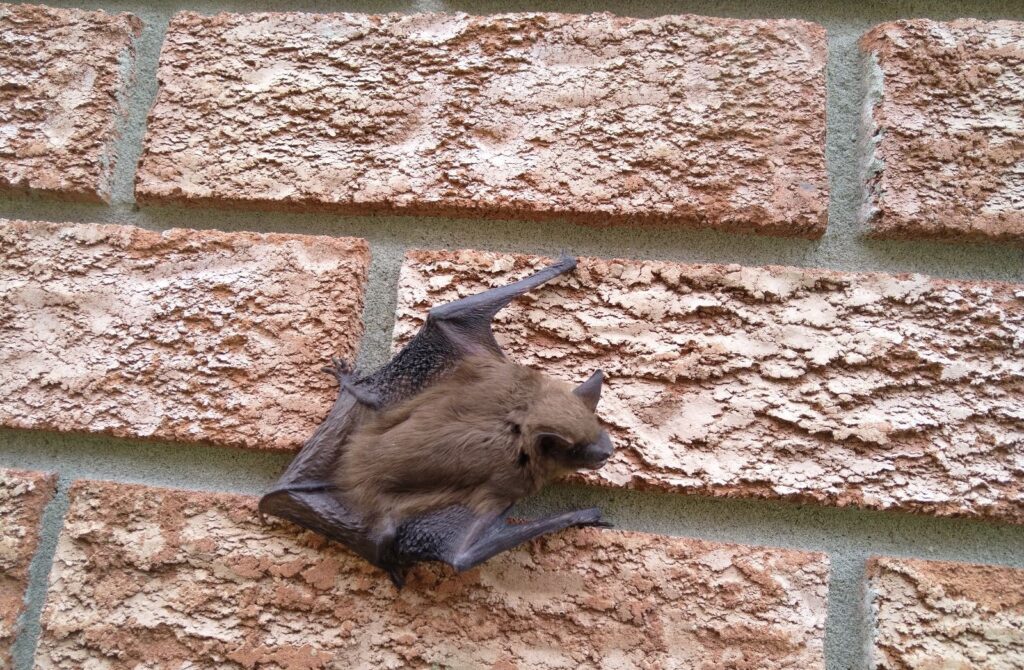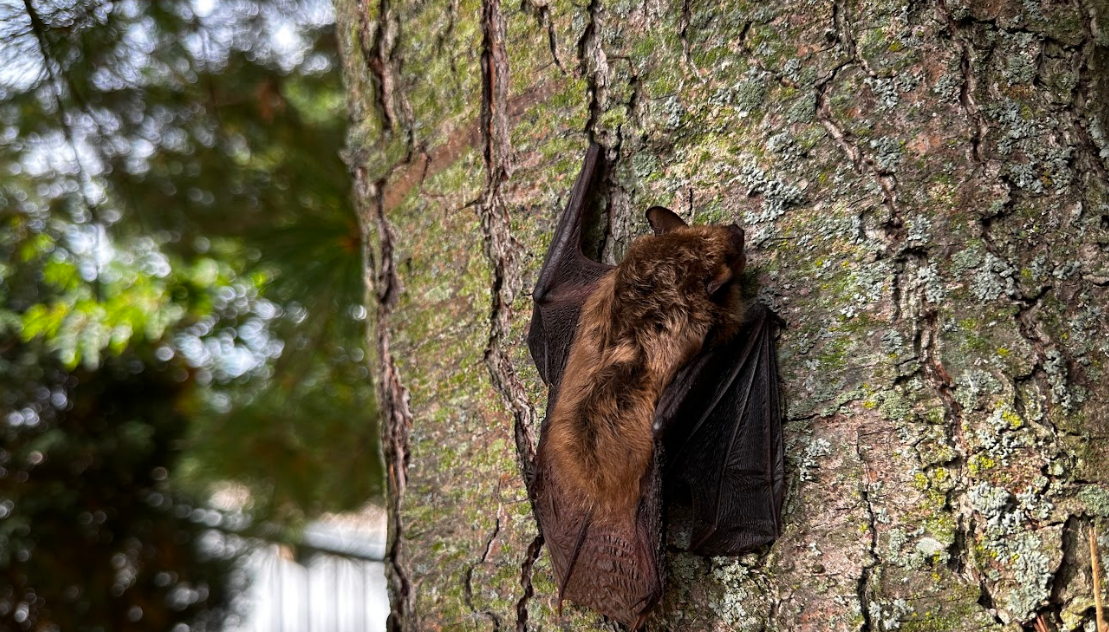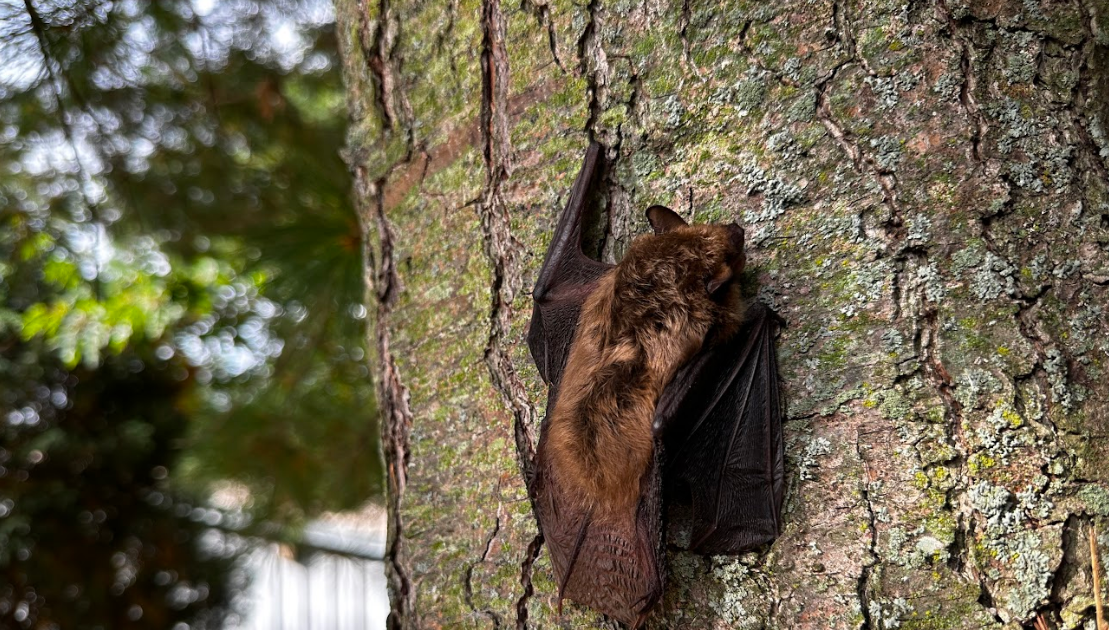Ever wandered into the mysterious world of nocturnal beings, particularly those that flutter in the night sky? Allow us to take you on an enlightening journey into the intriguing subject of bat communication. Our team specializes in understanding their night-time chatter.
These winged creatures have developed an elaborate system to communicate with each other, which holds immense value in understanding their behaviours and presence in a residential environment.
Our discussion will explore the following:
- The fascinating ways in which bats converse amongst themselves
- What forms the unique sound of a bat’s call
- How to identify a potential bat situation in your home
- The dangers of handling a bat situation personally
- Professional tips and procedures to safely remove bats from your property
- The immense benefits of entrusting bat removal to a certified wildlife expert
- How our team presents the right solution for your wildlife concerns
Wildlife removal in Toronto, specifically involving bats, requires a carefully orchestrated and humane approach, ensuring both the safety of the homeowner and the preservation of the creatures.
What Do Bat Sounds Typically Resemble?
What do bats sound like? The symphony of the night often includes our winged friends. Understanding what their vocalizations resemble can help us not only appreciate their complex communication but also identify their presence. Here are some characteristic sounds bats produce:
- Clicks: Bats are known to produce sounds equivalent to clicks or “shushing” noises to communicate with other bats or locate their prey, a process known as echolocation.
- High-Pitched Screeches: The natural sound frequency of bats falls in the ultrasonic range, typically above 20 kilohertz. This can occasionally manifest as high-pitched screeches to the human ear when slowed down or heard in close proximity.
- Chirps: Some people often mistake bat sounds for bird chirps. These nocturnal creatures produce rhythmic sequences of chirps, especially during their foraging activities.
- Whistles: Bats also emit whistle-like sounds, but unlike the lovely songbird’s tune, these sounds aid in navigation and communication during the night.
By familiarizing ourselves with these ‘bat sounds,’ we can better understand these creatures of the night and their knack for navigation and communication. However, if these nocturnal symphonies become too loud or are accompanied by signs of an infestation, it’s advisable to seek professional assistance like us for their safe and humane removal. Let’s remember: these winged creatures have a crucial role in maintaining our ecosystem’s balance.
What are the Primary Methods of Communication Among Bats?
How do bats communicate? The world of night-time avians, particularly bats, is filled with fascinating communication techniques. While their primary method, echolocation, is well-documented, their repertoire encompasses more than just ultrasonic signals.
- Ultrasonic Vocalizations: Different species utilize varying vocal pitches and patterns, emitting high-frequency sounds that bounce back to them to navigate and source food. This is the recognized echolocation process.
- Social Calls: Not all vocalizations these creatures make are for navigational purposes. They commonly use social calls for communication. These sounds, distinct to each species, help in group coordination and expressing distress or territorial disputes.
- Physical Gestures: Relying heavily on non-vocal cues, body gestures and movements play a vital role in the creatures of the night’s communication. For instance, males often manifest agitated wing-flapping to deter competing males during the mating season.
- Pheromones: Smell also plays an essential part in how bats talk to each other. They use scent marking to show areas of dominance or lay claim on fruiting trees, while female bats emit specific pheromones to attract mates.
The subject of communication is multilayered and complex, thoroughly encompassing a diverse range of sounds, gestures and scents. Understanding these methods holds the key to identifying their presence in our homes and employing safe removal procedures.
How Does Echolocation Factor in Bat Communication?
These mysterious, nocturnal beings, often shrouded in myths and legends, utilize a rather interesting method for interaction and navigation. They employ a natural, acoustic-based GPS system, popularly known as echolocation. Here’s how:
- Bats emit high-frequency sounds, usually through their mouths or noses, depending on the species. These sounds are inaudible to the human ear.
- These sounds travel forward till they hit an object. Then, they ‘bounce’ back to the bat, known as the echo.
- Through these echoes, these creatures can infer a myriad of information, such as the distance, size, and even texture of the object.
- By using this remarkable method, these nocturnal beings can pinpoint their prey, identify threats, and avoid obstructions with superb precision.
Remarkably, each type of bat has a unique frequency to its call, almost like its personal echo signature. Therefore, not only does echolocation allow them to ‘perceive’ their surroundings in the lack of light, but it also aids in recognizing each other. Truly captivating, isn’t it?
What are the Telltale Signs of a Bat Infestation in Your Home?
If you suspect that your home might be serving as a shelter for these nocturnal flyers, you should be aware of a few key indicators. The signs of a possible bat habitation require careful observation. Look out for the following:
- Distinctive “Chirping” Sound: Bats are known for their unique vocalization, which can be heard especially at dusk or dawn. These sounds are typically indicative of these night creatures ‘talking’ to each other.
- Droppings Near Entry Points: Identification of droppings is vital, as this helps in understanding wildlife presence. When bats inhabit a space, droppings or ‘guano’ is often found near the entry points they are using.
- Grease Marks on Surfaces: The oil from bats’ fur can stain surfaces, creating a subtle yet noticeable sign.
- Foul and Pungent Scent: Similar to other wildlife invasions, a strong, unpleasant odour, particularly one that smells like ammonia, is a common telltale sign of a bat infestation.
- Rare Sightings at Dusk or Dawn: Though bats are elusive, you may spot them flying out of your home as they leave for their nocturnal activities or return at dawn.
Understanding these key indicators of an infestation can help ensure a timely response. This nocturnal communication might be challenging to read, but with careful observation, you can address the issue proactively. For your safety and that of the bats, always opt for humane wildlife removal in Toronto like ours when faced with a bat infestation.
Why is DIY Bat Control Potentially Harmful?
In as much as do-it-yourself methods can seem enticing due to their purported cost-effectiveness, when it comes to dealing with bats, they can often lead to more harm than good. There’s more at stake here than just wishful thinking. It’s about safety, effectiveness, and ethical considerations. Here’s why DIY endeavours related to creatures of the night are risky:
- Limited Understanding: These nocturnal animals communicate in complex, often misunderstood ways. You may lack the necessary expertise to accurately interpret signals and behaviors which could result in misguided actions.
- Exposure to Hazards: Bats can be carriers of diseases like rabies, which can be deadly for humans. Ill-equipped handling could expose you to these health risks.
- Ineffectiveness: Without adequate knowledge of echolocation, a key component of bat navigation, DIY techniques often prove ineffective in the long run. Bats usually return if the source of attraction isn’t completely removed.
- Legal Constraints: In many areas, it’s illegal to harm or kill these creatures. Accidental harm through unskilled removal methods could land you in legal trouble.
Sure, the idea of handling things on your own is a quick-fix solution. However, in the case of bat control, it’s best to leave the task to trained professionals like us. They understand the wildlife involved, can safely navigate the inherent risks, and have the equipment and knowledge necessary for effective, humane removal.
What are the Steps a Wildlife Technician Would Take for Safe Bat Removal?
If you observe repeated instances of night dwellers in your space, consider calling in professionals for assistance. With their expert training and deep understanding of these species, they are well-suited to ensure the creatures are removed with one-way doors that create minimal stress to them or risk to you. Let’s dive into the progressive stages conducted by a trained technician, ensuring safety and effectiveness in the procedure.
- Inspection: An initial analysis of your premises is critical. It helps identify the entry points and number of these nocturnal flyers in the residence.
- Detection: With the help of advanced equipment, the technician can determine the species and group size and even detect possible nesting areas.
- Preliminary Measures: Briefly prevent access to major entry points during the day when the flying mammals are less active.
- Flushing: Gentle dispersal occurs, encouraging the creatures to leave the premises without physical harm.
- Exclusion: After ensuring all members of the group have vacated, our expert will then seal all access points to avert any future infestation.
- Cleanup: Finally, the proper cleaning, sterilization, and neutralization of any left behind bio-material ensures a safe, clean living environment post-removal.
The aim of these meticulous steps is not just to ensure the removal of the non-human inhabitants, but also to maintain the balance of nature by ensuring the creatures are safely able to fly back to their natural habitat, away from human residences. With our experienced wildlife technician, the ethereal sounds of their ‘talk’ can fade from your residence to their appropriate place – the serene night sky. Rest assured your problem will be solved with empathy, expertise, and efficiency.

What are the Advantages of Hiring Professional Wildlife Technicians for Bat Displacement?
When faced with unwanted guests of a winged persuasion, it’s easy to feel overwhelmed. Dealing with these night flyers isn’t a traditional homeowner’s task, after all. Leave it to the professionals – qualified wildlife technicians like us who offer a multitude of advantages:
- Knowledge and Experience: Professionals have insights into bat behaviour, understand their favoured roosting places, and can interpret signs of their activity.
- Humanitarian Approach: They prioritize removing these creatures humanely, causing no harm to them.
- Safe and Efficient: With the right technique, tools, and protective gear, they manage an efficient displacement of your unwanted guests.
- In-Depth Inspection: They conduct a full home inspection, ensuring all potential entry points are identified and sealed.
- Long-Term Solutions: A professional wildlife technician won’t just evict your winged intruders, they’ll take measures to ensure no future invasions.
Securing the expertise of wildlife technicians means you’re equipped with the best strategy for nocturnal visitor management. Keeping our homes safe is vital, and sometimes, that means leaving wildlife removal to the pros.
Why Skedaddle Humane Wildlife Control is Your Ideal Solution
Understanding “nightly whispers” or the signs of these elusive creatures’ presence in our homes becomes pivotal. With heightened senses, bats’ echolocation could be everywhere without home dwellers noticing. When dealing with them, expertise is exceptionally significant. It ensures humane, effective, and long-lasting solutions – something our team at Skedaddle Humane Wildlife Control consistently delivers.
Wildlife intrusion can be quite disruptive, but it doesn’t have to be with the right solutions in place. If you suspect bat activity in your home, don’t procrastinate. The delay could translate into extensive damages. Reach out to us. Our experienced and licensed experts are on standby for prompt, safe, and efficient wildlife removal in Toronto.
Contact us today to request a quote and learn more about how we can help restore the tranquillity of your should this night creature take a liking to your residence. Count on us for your bat removal and preventative needs. You can trust our services to have a restful, bat-free home again.




